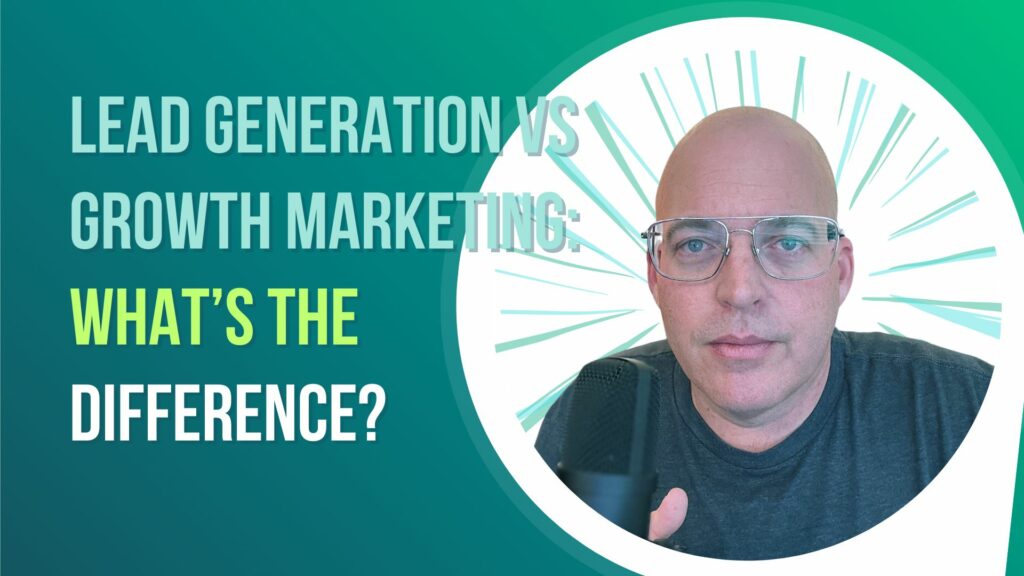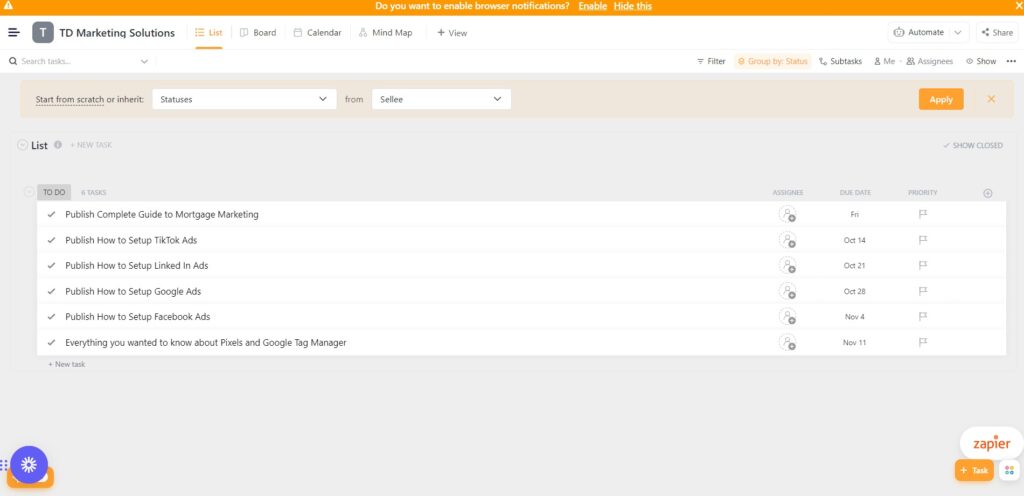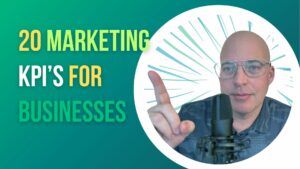Growth marketing and lead generation are two different marketing strategies.
Growth marketing is a data-driven strategy used to increase the number of users or customers of a product or service. At the same time, lead generation is generating leads for a business.
Growth marketing uses data and experimentation to acquire customers, and lead generation focuses on capturing and developing leads.
Leads do not always equate to acquiring customers! I have been in lead generation, digital marketing, growth hacking, and growth marketing for over a decade. In my opinion, growth marketing is the future. Growth marketing isn’t just for B2B or SaaS.
I would argue that B2C is a few years behind in implementing many of the strategies commonly found in B2B. This guide provides a complete resource for anyone looking to augment their lead generation or digital marketing strategy.
What is Growth Marketing?
Growth marketing is a data-driven and structured process of increasing the number of users or customers for a product or service. It is a combination of marketing, product development, and analytics, and it focuses on acquiring and retaining users using the scientific method, e.g., Hypothesis, Experiment, Report, and Analyze. (H.E.R.A)
Growth marketing takes more of a holistic approach to client or customer acquisition and uses data-driven processes to make informed decisions.
Growth marketing starts with a marketing hypothesis and then uses data to test that hypothesis. It assumes nothing and uses a data-driven approach to experimentation. The lessons learned from experimentation in growth marketing will inform future campaigns.
In addition, growth marketing takes a larger view of the entire customer journey across various marketing strategies. In many respect, growth marketing wraps desperate marketing functions such as email marketing, marketing automation, paid advertising, lead generation, content marketing, social media, and offline media in a structured approach that rewards experimentation and learning.
What is Lead Generation?
Lead generation is finding and qualifying customers for particular products and services. It involves identifying potential customers and capturing their contact information, such as their name, email address, or phone number.
Why is Lead Generation Not as Effective?
Lead generation is not as effective as growth marketing for a few reasons. The first reason is that lead generation is a one-way street. With lead generation, you are only capturing information from potential customers.
With traditional lead generation, you are not engaging with your customers or providing them with any value.
Often times lead generation uses a lead magnet with low-value content to get the customer to complete a form fill.
The second reason is that lead generation is based on cold outreach. You are sending out messages to people who may not be interested in what you have to offer.
The third reason is that lead generation doesn’t focus on building trust, authority, or value. The focus is capturing a form fill, usually a name, email, and phone number.
Growth marketing, on the other hand, is based on providing value to potential customers.
With growth marketing, you engage with your customers and provide them with valuable information.
This can help you build relationships and encourage them to do business with you.
Growth marketing is also based on warm outreach. You are reaching out to people who are already interested in what you have to offer. This can lead to a lot of success in terms of conversions and sales.
What are Some Growth Marketing Tactics?
Creating and publishing engaging content regularly
Creating engaging content is a key component of any growth marketing strategy. It all starts with content. Start by creating a blog section on your website and stacking useful content.
You can brainstorm ideas in Evernote or OneNote and then use a tool like ClickUp to build your calendar of topics you want to post.
Once you have your topic, I highly recommend using GrowthBar to help outline and develop the content.
Once your content is created and published, you can re-use this across multiple channels, including email and short reels on TikTok, Facebook, and Instagram.
You can also create podcasts and YouTube videos around your content.
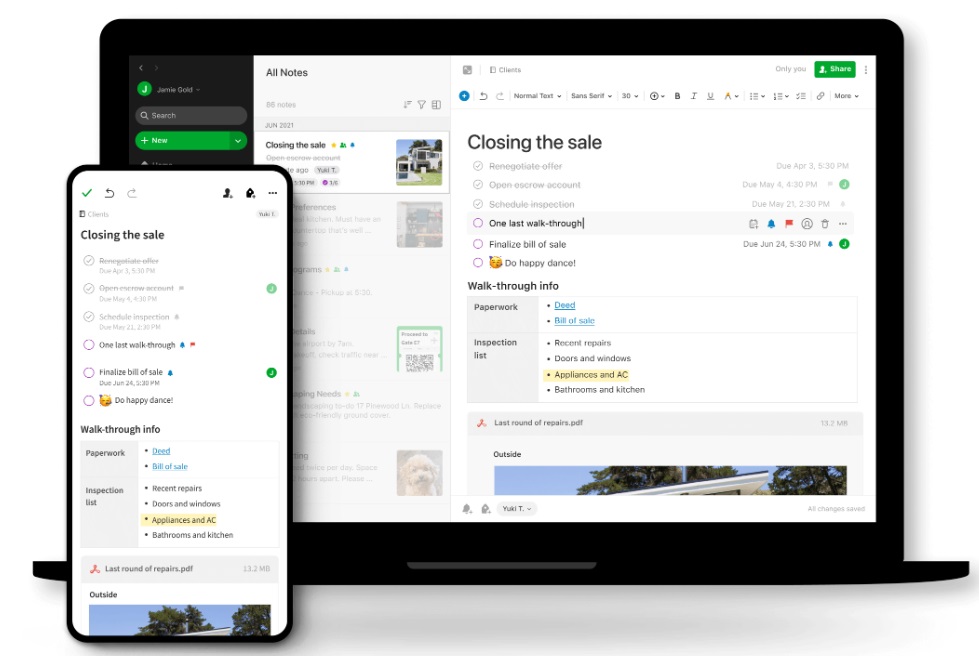

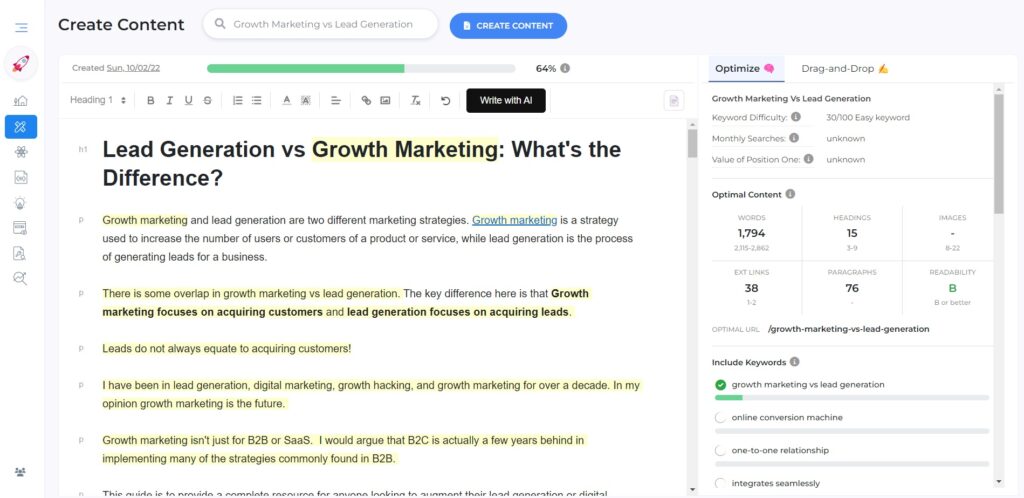
Generating user reviews and testimonials
One way to generate user reviews and testimonials is to ask users to submit a review or testimonial after they have had a positive experience with your product or service.
You can also incentivize users to submit a review by offering a discount or other incentives for doing so.
This can be automated from your CRM to send your customer an email and text message to ask for a testimonial or review.
There are also tools such as Trustpilot that can handle this process for you. You can expose those reviews real time on your website if you are using WordPress by using this review plugin.
Conducting keyword research and using the right keywords in your content
The first place to start is by looking at some of the tools you will need to research keywords and competitors. Here are a few SEO and Keyword tools to get started.
SEO and keyword research Tools
1. Yoast SEO: Yoast SEO is a plugin for WordPress that helps you optimize your content for SEO. It provides you with tips on how to improve your SEO, and it also analyzes your content to see how well it is optimized.
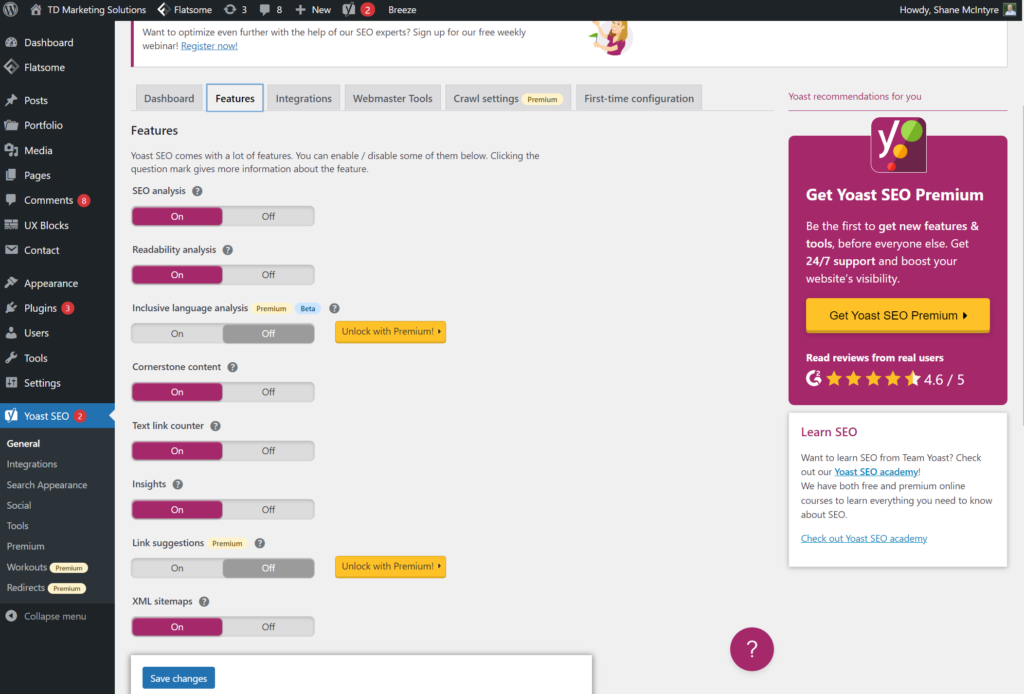
2. Moz: Moz is a tool that helps you track your SEO progress and performance. It analyzes your website, tells you how well you are doing in terms of SEO, and provides tips on improving your SEO.
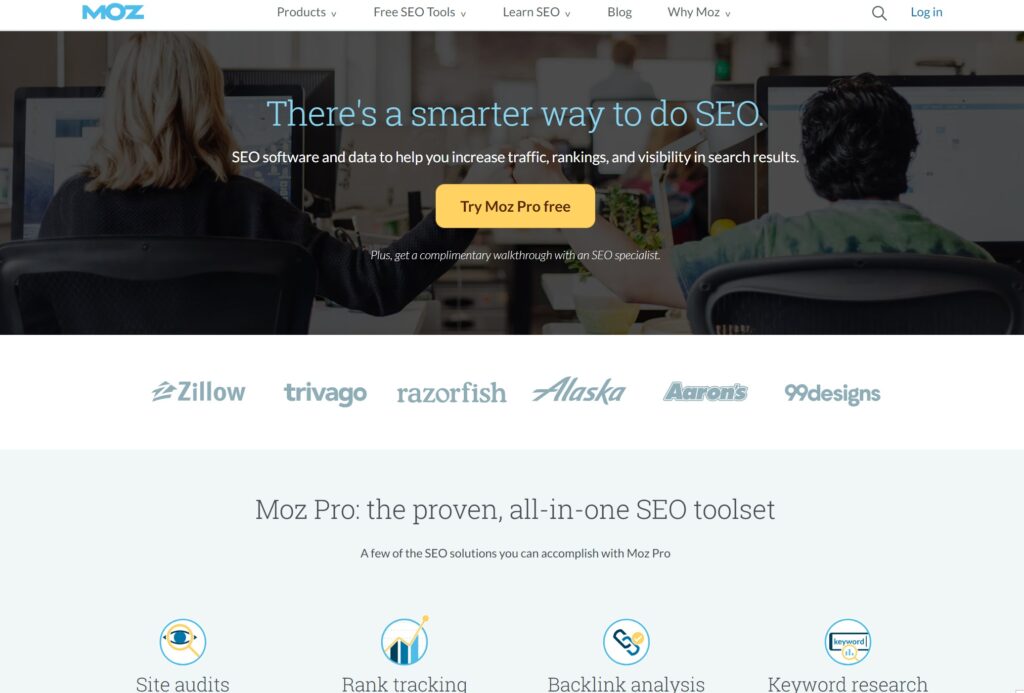
3. SEM Rush: SEM Rush is a popular SEO tool that allows you to track your website’s performance and your competitor’s. You can use SEM Rush to research keywords, track your organic and paid search results, and more.
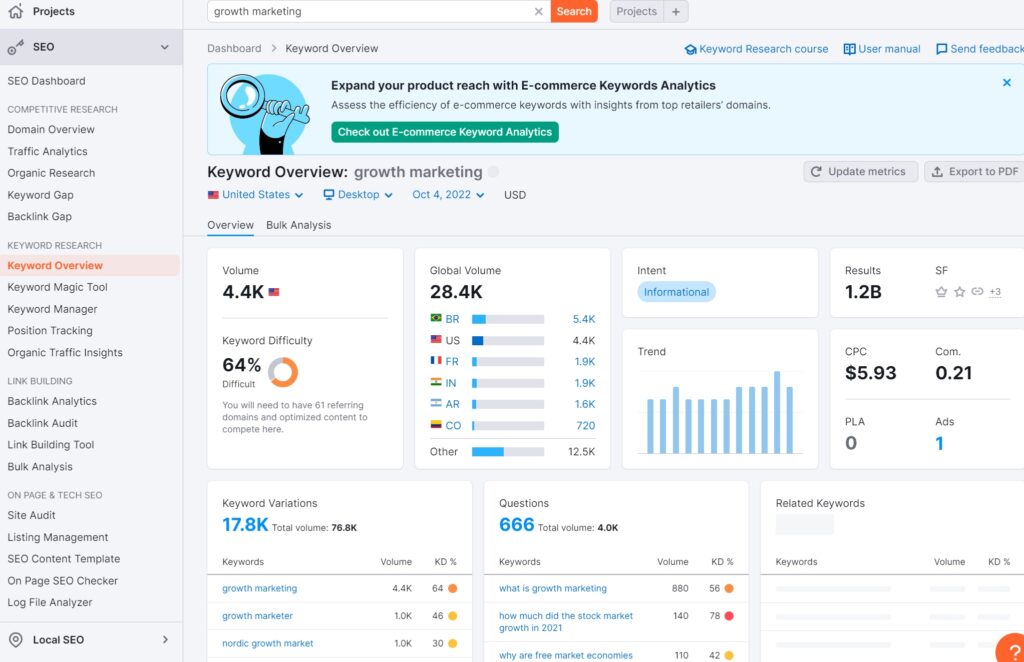
4. Ahref: Ahref is a tool used for backlink analysis and is one of the most popular tools in this category. It has a huge database of backlinks and is updated regularly. It also has a rank tracker, which is useful for keeping track of your website’s ranking in search engines

5. Growth Bar: My personal favorite, GrowthBar is an all-in-one tool that will handle keyword planning and content outlines and includes OpenAI for content creation.
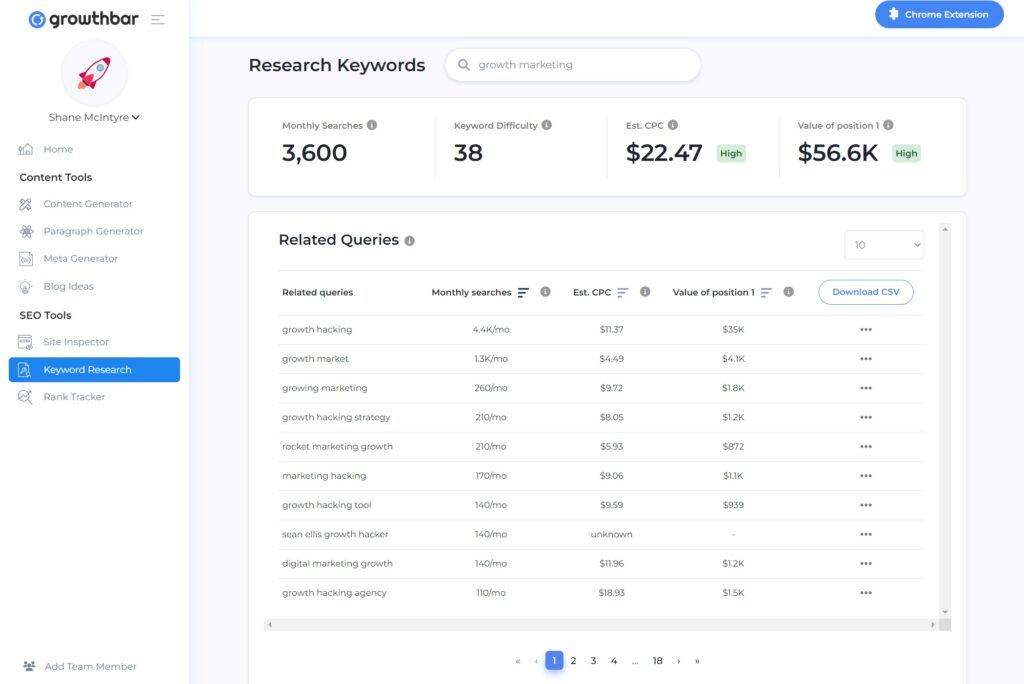
Growing Your Email List
If you are looking for ways to grow your email list, here are a few ideas:
1. Offer a free trial or a free product.
2. Add a sign-up form to your website.
3. Run a contest or giveaway.
4. Provide valuable content or tips.
5. Send out a monthly newsletter.
6. Offer a discount for signing up.
7. Join Forbes Business Council and HARO and get published
8. Run ads on social media or online.
9. Create free tools (calculators, guides, and templates)
10. Create a community or tribe on Facebook Groups, Slack, Discord etc.
Using Landing Pages to Convert Traffic from Your Blog
When you create a landing page, you must ensure that it is designed to convert traffic from your blog.
1. Keep it simple.
2. Use clear and concise headlines.
3. Use strong calls to action with bright colors. #ff9800 is my favorite for a CTA.
4. Make sure all of your retargeting scripts are working.
5. A/B Test everything
6. Add social proof, testimonials, and reviews.
7. Remove unnecessary fields.
Paid Advertising Channels
Paid advertising is a key component of a growth marketing strategy. It is additive to your overall strategy. Paid digital channels allow for real-time reporting and measurement of key indicators such as Customer Acquisition Costs (CAC) and Return on Ad Spend (ROAS).
Below are some paid advertising channels that can be used in your growth marketing strategy.
1. Google AdWords
2. Facebook Ads
3. LinkedIn Ads
4. Twitter Ads
5. Microsoft Ads
6. Tiktok Ads
Which platforms to use will depend on who your ideal customer is.
When combined with a larger growth marketing strategy paid channels can be extremely powerful both in remarketing/retargeting and in prospecting for new clients.
Growth Marketing Tools
Below is a list of some of our favorite growth marketing tools.
1. Zapier – Zapier is a web automation tool that allows you to connect various online services to automate tasks for various platforms.
2. ManyChat – ManyChat is a chatbot platform that allows you to create and manage chatbots for your Facebook page. You can use ManyChat to send automated messages to your followers, collect leads, and sell products and services.
3. Monday.com – Monday.com is a task management tool allowing team members to collaborate. It is a great tool for managing projects and for tracking progress.
4. Hootsuite – Hootsuite is a social media management tool allowing users to track all their social media accounts in one place. It also provides users with analytics to help them track the success of their social media campaigns.
5. BuzzSumo – BuzzSumo is a tool that allows users to see the most popular content across all social media platforms. It is a great tool for identifying what content is resonating with audiences and for finding new content ideas.
4. Folderly – Folderly is an AI platform to increase email delivery. If you are going to spam or promotions, you need this!
5. Canva – If you don’t know what Canva is let me welcome you back from under your rock.
More Growth Marketing Tools
6. CapCut and Captions – If you are doing any type of TikTok, Reels, etc. You need CapCut and Captions you will thank me later.
7. OneNote or Evernote – You get this great idea on the toilet, at the park, or on the beach. Have this app on your phone to capture it. It will also sync with your computers.
8. Substack – Substack is a platform for creating and distributing newsletters.
9. Kajabi – Even if you are not in the “course” business creating courses can be a very powerful tool to create trust and authority. Kajabi is a great tool to capture all that knowledge quickly and put it to use.
10. Trends – Few tools here Google Trends. Warning I lost 30 minutes of my life watching trending searches. Exploding Topics is a great tool and for deep market research check out Trend Hunter.
11. ClickUp – ClickUp is a great project management and collaboration tool including creating marketing calendars.
12. GrowthBar – I mentioned GrowthBar before, sign up you will thank me later.
Top Growth Marketing Resources
Here are some of my favorite growth marketing blogs, podcasts, and youtube channels.
1. Growth Marketing Pros – Great example of a growth marketing strategy to replicate. Also, a ton of information and content.
2. Andrew Chen – These essays are incredible. Go deep down the rabbit hole.
3. Reforge – Everything startup and growth marketing related.
4. Neil Patel – I have followed Neil Patel for almost a decade. You should too!
5. Noah Kagan – Wealth of information on his OKDork blog.
6. Gary Vee – A ton of great videos and content.
7. Growth Tribe – Great YouTube channel.
8. Seth Godin – If you don’t know who he is Google him.
9. Ryan Stewman – Unfiltered and direct to the point. All things sales and marketing related.

